***
N. China
Day 4 - 2nd November - Qufu: Confucius Mansion, Tai'an Station (Part 3)
The next and last of the Confucius stops was the Confucius Mansion. It was the newest of the 3 - the temple dates back to 205 BC, the cemetery-forest to the Zhou Dynasty, but the Mansion was built in 1038 (the Song Dynasty)
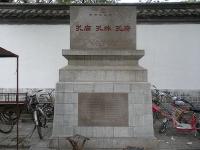
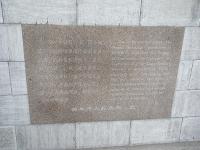
UNESCO Plaque
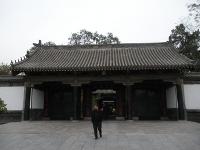
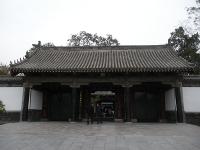
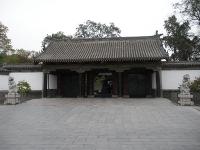
Entrance to Mansion
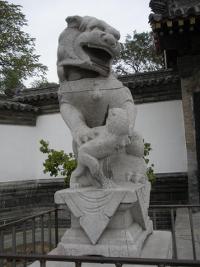
Closeup of Lion on the left
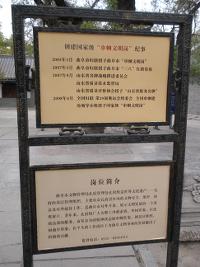
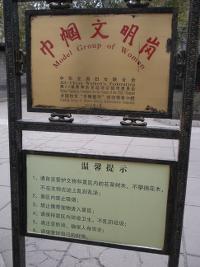
Plaques in Mansion. The "Model Group of Women" is amusing
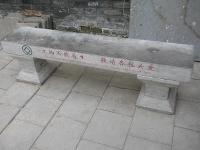
UNESCO bench: "The archaeological artifacts are not recyclable" (I think they mean "renewable")

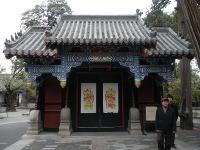

"Gate of Double Glory"
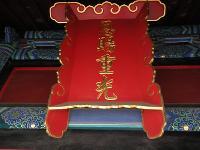
Detail of vertical tablet
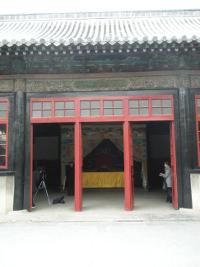
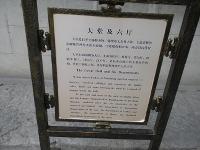
"The Great Hall and Six Departments"

Punishment rods - you can't cry out when they hit you
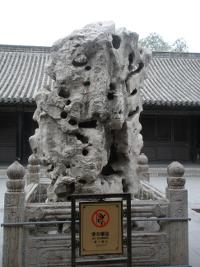
This rock was outside one hall so the proverb "开门见山" ("Open the door and see the mountain") would be fulfilled.

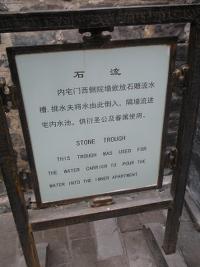
Stone trough for water - IIRC this was to protect female modesty
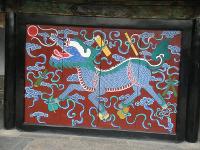
This greedy creature is going for the sun and is carrying the 8 Immortals' items

Idealised landscape - trees, water and mountain
The Mansion also had 2 gardens and some important buildings from the 20th century, but neither was very nice and I was quite confused (the narration was a bit incomplete, so I needed to ask a few questions before I found out that the Kong family had been thrown out [in the Communist era, I think]). The guide claimed the other temples [the non-Confucius ones] in the area were modern and the oldest dated from 1993, which struck me as quite weird.
My guide took her leave here, so I asked my driver to bring me to another temple, as it was only 2 pm. So he brought me to the Yan Miao - dedicated to Confucius's favourite disciple, Yan Hui.
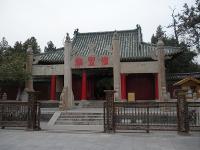
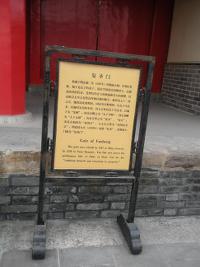
Fusheng Gate
This didn't look like it had been rebuilt in 1993, so I judged 50¥ worth paying.
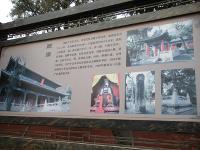
The signboard made it look very nice
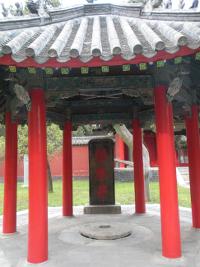
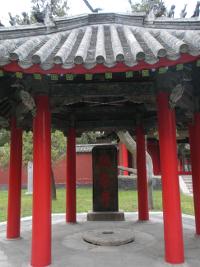
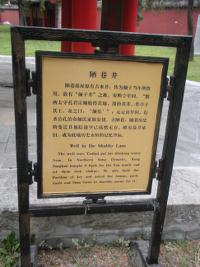
"Well in the Shabby Lane"
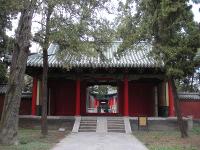

Gate of Yangsheng
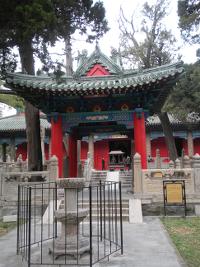
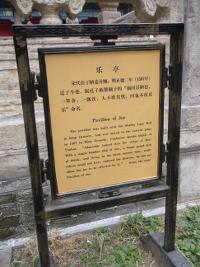
Pavilion of Joy

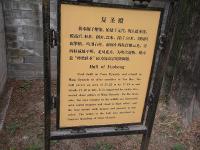
Fusheng Hall


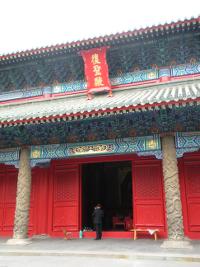
Altar of Fusheng Hall. The hall was quite disappointing as it was bare - what you can see from here was the only adornment. Apparently the guy had no disciples

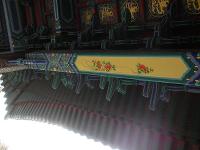
Nice eaves
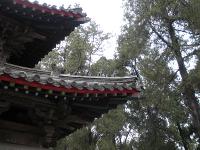
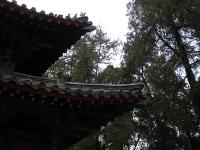
Creatures on roof eaves. I will return to them in a later post (where I document the time I found out what they were).
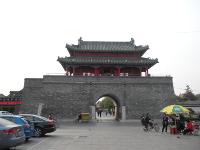
Qufu Drum Tower. In a testament to how money-minded PRCs are, they wanted to collect a parking fee even though my driver said he was only dropping me off for 1 minute to take a picture, and that he would just take a round around the carpark.

Northern Gate of Qufu, from the Ming era. The Ming liked to build and rebuild walls (most prominent example: the Great Wall)
At this point, for some reason I have a note about stupid chicken being kampung.
As it was only 2:40pm, I asked my driver to bring me to another shrine - the Zhou Gong Temple (the temple of the Duke of Zhou)
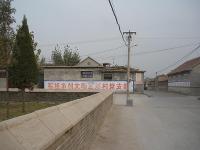
"积极争创文明五好村党支部" ("Increasing the standard; pursuing creativity, civilization and the 5 goods Party Branch")
Propaganda
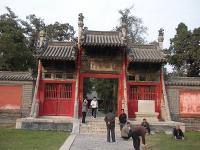
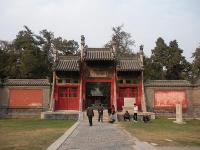
Rundown gate of the Zhou Gong Temple
Experience and my instincts told me that the most impressive thing about the Zhou Gong temple was the gate. Amazingly, entrance would've been another 50¥, and it was most likely even more miserable than Yan Miao. So I decided not to 见周公 ("see Zhou Gong" - I asked my driver but he couldn't tell me if this was *that* Zhou Gong)

Side gate of Zhou Gong Temple
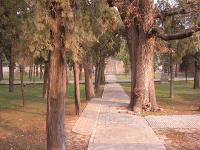

Through that gate - the dump inside
I then asked to be taken to my last Qufu destination - the tomb of Emperor Shao Hao, which was about 4km outside of town (at Jiuxian, according to Wikipedia).
My driver dropped me a short way from the Shao Hao maosoleum. While walking through a small park on my way to it, I got ambushed by an old woman (a first!) claiming to be a guide. Rather unwisely, I did not agree with her in advance what her guide fee would be (this is China - did you think she would have done it free or hope to survive on gratuities?!?! FAT HOPE!)
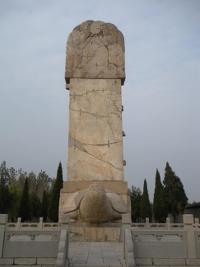
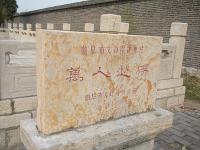
"赑屃" (she pronounced it as bi4xi1 but the correct pinyin seems to be bi4xi4) - "传说中一种像龟的动物,力大,好负重。旧时大石碑的底座多雕刻成赑屃的形状。"
It is the 6th son of the Jade Emperor
According to my guide, this was erected in the Song Dynasty, and the stone had to be hauled from 9km away so it took them 18 years to pull it over, and 10,000 cows died. I tried to roll my eyes, as it seems the Ancient Egyptians more than 3,000 years before this were a lot more efficient. My guide said that this was the largest stele in the world with no words, and that it had never been raised until 1991. The one opposite it (on the other side of the pond) had 2 words wirtten in the Yuan Dynasty.
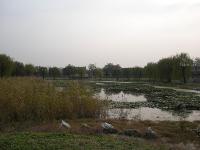
Pond. They are bizarrely proud that it has no spring and yet has never dried from the Song dynasty till today.

My guide claimed that this was a 999 year old tree. I looked closer and there was a new tree growing inside the shell of a dead one
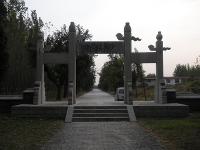
Shao Hao mausoleum gate

Entrance to Shao Hao mausoleum. My guide said that the gate dated from the Song Dynasty and that the wooden thing blocking you from strolling in was the highest in China (WTF)
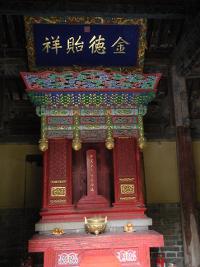

Song building - the words are by... Qianlong
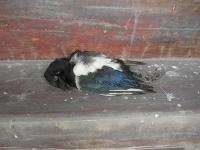
Bird dead on windowsill (?!). As I told my guide, I was "恶心" (I always thought this meant "perverse" but it actually means "disgusting". Oops)
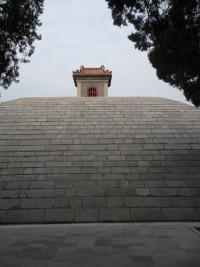
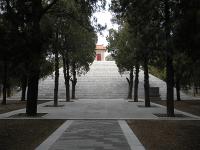
Shao Hao pyramid, the only one of its type in CHina. It was built in 1012. There are 10,000 pyramids (?) but this is the highest in China, and there is deliberately no cap on the top, so that Shao Hao can look down. Unfortunately there is no way up.
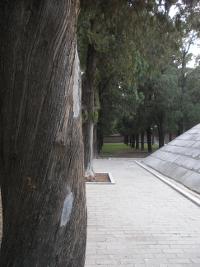
Trees and pyramid

Behind the pyramid was a mound, the highest "mountain" in China at 8.9m.

Snake at pyramid (which wasn't moving - but I didn't take any chances). My guide didn't notice it until some time after I took this photo.
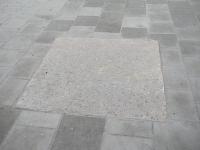
There was a reason I took a picture of this stone, but apparently I didn't write it down. Oh well.
At the end of my tour, my guide then claimed that I owed her 50¥. She claimed that each place cost 30¥ (despite each place being tiny), so she was giving me a discount. I protested, saying that she hadn't announced this at the start (I could've cited differing cultural norms and that I thought it was free - though I knew that an unmercenary PRC was harder to find than an unkiasu Singaporean). But then you don't just pay these people for their services - you pay them to shut up and go away. After I paid her she complained that she probably would be unable to catch the next tour group - that served her right!
So I headed back to Tai'an at about 3:40pm, which was a little early, but then there was nothing left to do. There was also a hole where Confucius had supposedly been born, but this was just a marketing tactic like the hole that is Socrates' "birthplace" in Athens.

Motorcycle feats - this doesn't look heavy, but it sure is bulky.
Arriving in Tai'an, I went to the bus terminal ticket counter to enquire how much a bus to Qufu would've cost. The guy who had sealed the car deal with me had claimed that a bus to Qufu would've set me back by 100¥ (he didn't specify one- or two-way), so his 260¥ whole-day car deal was a bargain. Naturally, he had been lying - a one-way bus to Qufu would've cost me only 20¥. Of course I had anticipated that he had lied to me, but the audacity of the size of the lie was shocking.
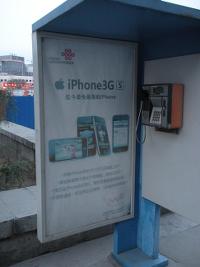
"iPhone 3Gs. 迄今最快最强的iPhone" ("To date, the fastest and most powerful iPhone")
China - behind the times
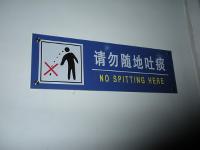
"No spitting here" - presumably you can spit elsewhere. Another sign I say read: "Do not casually spit". Presumably one can deliberately spit, then.
The ATM outside the railway station was enclosed in a booth, and one needed to press a button to enter or exit. This was probably an anti-robbery measure.
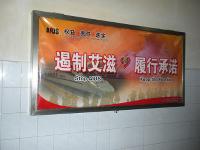
"权益 - 责任 - 落实
Universal Access and Human Rights
Stop AIDS. Keep the Promise"
The 3 Chinese phrases actually translate as "Rights/interests - Responsibility - Practical". Knowing the Chinese government, the mistranslation is on purpose (notice the bullet trains and dove [whose olive wreath looks like a ribbon]) in the background?
Having nothing to do and many hours to kill, I decided to seek out a form of Internet access. I found it in a seedy basement, in a hall which also had beds in it, around of which were hourly rest rooms. One couldn't argue with the price of 2¥ per hour, though! It must've been [one of] the cheapest in the world.
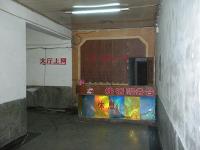

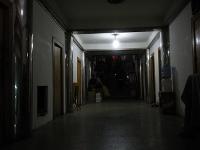
Dodgy basement. I didn't snap any pictures in the hall itself, less crazed PRCs come at me. In the latter 2 pictures the hourly rest rooms are at the side.
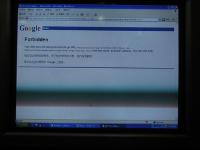
New manifestion of Great Firewall?
Gritty Tai'an, from carpark of railway station. It's even worse than by day.
Since it was dark and cold, I didn't venture out of the station (not that there was anything to do - possibly slightly better food options, but I had at least half a duck to finish anyway)
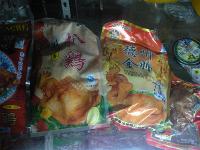
Vacuum-packed chickens. I thought of buying one 5-spice chicken, but I had 5 more night trains to take.

Vacuum-packed chicken parts, pig's trotters etc. Ugh!
I eschewed Minute Maid and tried a local orange drink - 鲜橙多 ("Fresh Orange More"). It was =>10% juice. There was a brand with =>30%, but it was only available in 2.5l bottles. It was alright, but a bit below Minute Maid's standard and had a strange tang to it.
The train station waiting room was dimly lit, yet a shop sold reading material. No wonder they need to do eye exercises.

Price discrimination in phone calls. For some reason calling within the district is more expensive (1 minute for 0.5¥) than calling the rest of the country (1 minute for 0.3¥)
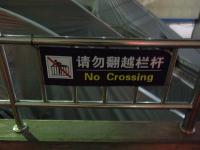
"No Crossing" - in the "strange things PRCs do for leisure" series

Pork Rib instant noodles - I had this for dinner with the leftover duck, which I finished most of, albeit getting a duck overload in the process. These actually tastes better than the lamian I had had the previous day for dinner - probably because it wasn't cooked to a Northern Chinese recipe.
Irritatingly, all 6 of the taps in the toilet (they were in a common area) did not work, and my hand was oily after the duck. Luckily I had had the foresight to keep the Dragonair wet tissue; wet tissue is good in China.
I tried another drink: 营养快线 ("Nutritious Quick Line") pineapple milk. It was marketed as healthy, which is why it cost 5¥ when the large bowl of instant noodles had cost 4¥.
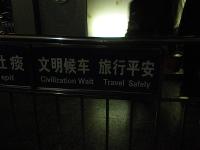
"Civilization Wait" - China indeed has to wait before it becomes civilized.
There was a sign for a "Communist Youth League Waiting Room" in the train station - but I didn't see any such room!
I had gotten a hard sleeper back to Beijing. It seemed slightly more cramped than a European couchette, with the blanket thrown about in a manner suggesting recent occupation. Nonetheless, it beat a hard seat!
And so I was lulled to sleep by the gentle rocking of the train, aided by there being a cabin with a sliding door - until I heard "kah-pui" as someone cleared his phlegm, and the occasional sound of Chinese commentary on the radio.
I saw more Western-style hospitals than Chinese-style hospitals (i.e. Chinese medicine). What does that tell you?
I saw more motorised bicycles than bicycles. My driver said they were very common, and that motorcycles used to be more popular - but that this was cheaper (and so more practical for shorter journeys where batteries worked). I did see some electric bicycles where the motors were off - perhaps they had run out of juice.
Shandong license plates have the "鲁" (lu3) word because last time this was the Lu Kingdom.
I don't understand why day trains have sleeper cars. Maybe it's less troublesome than converting trains or cars at night, and given the long journeys (for example, Beijing-Chengdu takes from 1 day and 1 hour to 1 day and 7 hours) it lets people rest in the day.
In China the area of the railway station where you buy the tickets is separate from the rest of the station - and a ticket check is needed to enter the latter. Presumably this is to keep out vagrants.
Actually the next of my trips out of Beijing was due to be Ping Yao, which was closer to Tai'an than Beijing, but the Chinese railway system in Northern China is centred around Beijing (like the TGV uses Paris as a hub), so it is easier and faster to go through Beijing.


